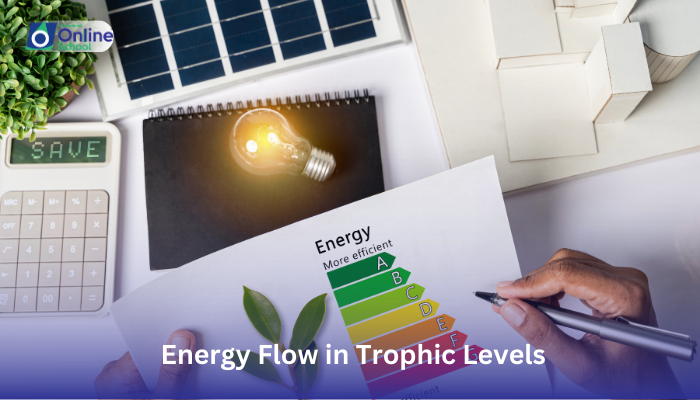
Learning Outcomes:
i. Explain the concept of trophic levels and how energy is transferred between them in an ecosystem.
ii. Identify the different types of consumers (herbivores, carnivores, omnivores) and their roles within the energy flow.
iii. Appreciate the significance of energy transfer efficiency and its impact on ecosystem stability.
Introduction:
Imagine a lively food court, plates overflowing with delicious treats. But what if these treats weren't just for immediate consumption? What if they held the key to the very survival of the entire food court? This is the fascinating world of energy flow in ecosystems, where energy, like a precious dish, is transferred from one "trophic level" to another, sustaining life at every step. Today, we join this grand feast, tracing the journey of energy as it flows through different levels, unraveling the secrets of ecological dynamics.
i. The Layered Feast: Understanding Trophic Levels:
Think of an ecosystem as a multi-storied building, each floor representing a trophic level. At the base, we have the producers: plants and algae that capture sunlight and transform it into energy through photosynthesis. These green chefs prepare the first dish – the energy-rich carbohydrates that fuel the entire ecosystem.
On the next floors reside the herbivores: animals like deer, rabbits, and insects who dine directly on the producers. They consume the plants, extracting the energy for their own growth and activities. This is the second course – the energy transferred from the producers to the primary consumers.
Next come the carnivores: wolves, owls, and even some insects who don't dine on plants directly but feast on the herbivores. They take the energy from the primary consumers and utilize it for their own survival, forming the third course – the energy transfer from herbivores to carnivores.
The food court doesn't end there. Some organisms, like omnivores, enjoy a diversified menu, indulging in both plants and animals. They act as connectors between different trophic levels, ensuring the energy flow keeps moving.
ii. The Efficiency Dilemma: A Matter of Loss:
But this energy transfer isn't perfect. At each trophic level, some energy is lost through respiration and other processes. Imagine a delicious dish losing some of its warmth or flavor as it's passed around. This energy loss means that the amount of energy available to the next level decreases. Consequently, ecosystems generally have fewer individuals at higher trophic levels compared to lower levels.
iii. The Balance Act: Stability and Efficiency:
The efficiency of energy transfer plays a crucial role in ecosystem stability. Ecosystems with higher transfer efficiency, where less energy is lost at each level, tend to be more stable and support a wider range of organisms. Conversely, disruptions in the flow, such as overhunting or habitat loss, can reduce efficiency and destabilize the entire ecosystem.
Understanding energy flow in ecosystems is not just about tracing a path; it's about appreciating the intricate web of life that connects every living thing. By recognizing the importance of energy transfer efficiency and the consequences of its disruption, we gain valuable insights into the delicate balance that sustains our planet's biodiversity. Remember, each bite taken, each predator-prey interaction, is part of the grand energy conveyor belt, ensuring the flow of life within the magnificent feast of our ecosystems.